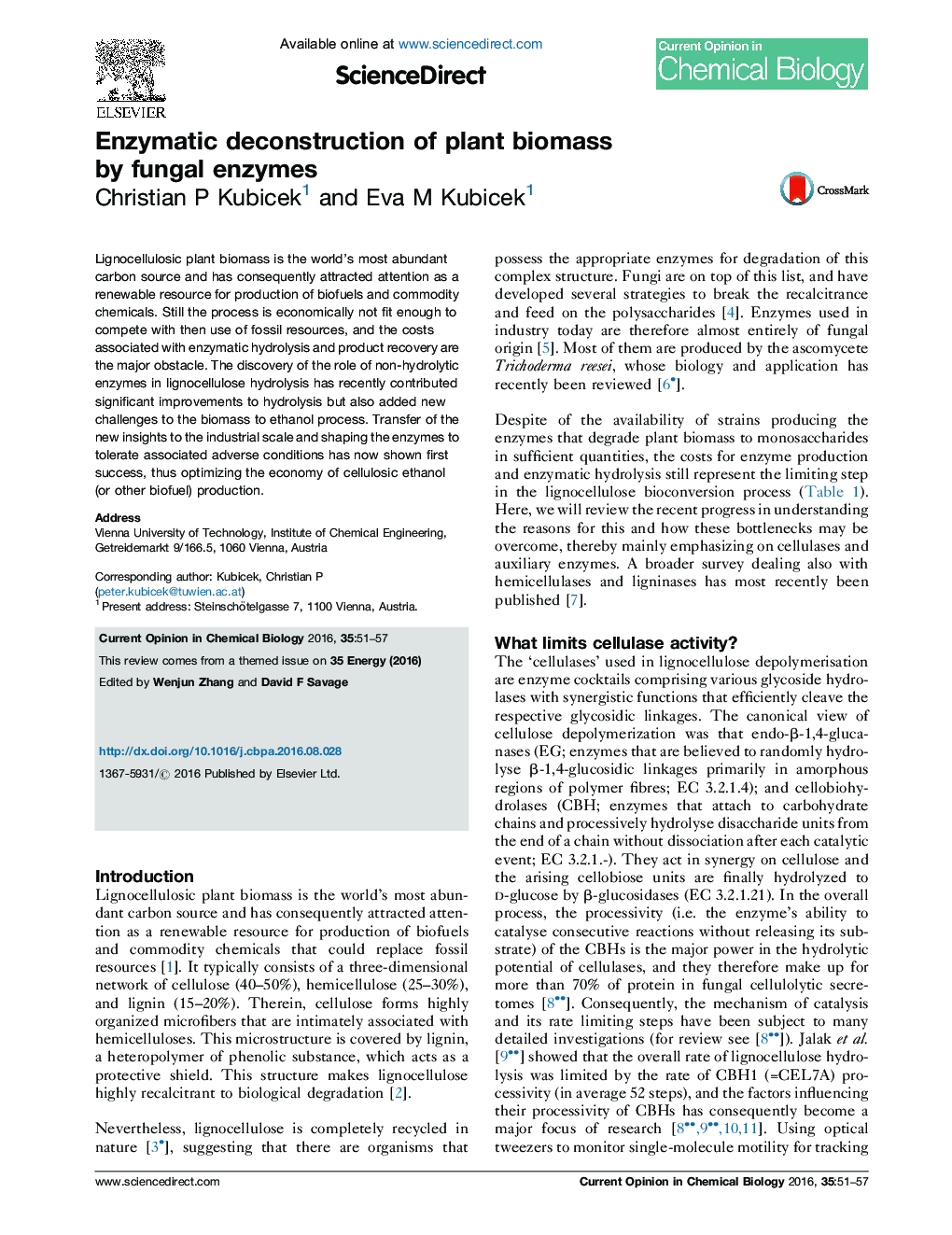| Article ID | Journal | Published Year | Pages | File Type |
|---|---|---|---|---|
| 7694021 | Current Opinion in Chemical Biology | 2016 | 7 Pages |
Abstract
Lignocellulosic plant biomass is the world's most abundant carbon source and has consequently attracted attention as a renewable resource for production of biofuels and commodity chemicals. Still the process is economically not fit enough to compete with then use of fossil resources, and the costs associated with enzymatic hydrolysis and product recovery are the major obstacle. The discovery of the role of non-hydrolytic enzymes in lignocellulose hydrolysis has recently contributed significant improvements to hydrolysis but also added new challenges to the biomass to ethanol process. Transfer of the new insights to the industrial scale and shaping the enzymes to tolerate associated adverse conditions has now shown first success, thus optimizing the economy of cellulosic ethanol (or other biofuel) production.
Related Topics
Physical Sciences and Engineering
Chemistry
Chemistry (General)
Authors
Christian P Kubicek, Eva M Kubicek,
